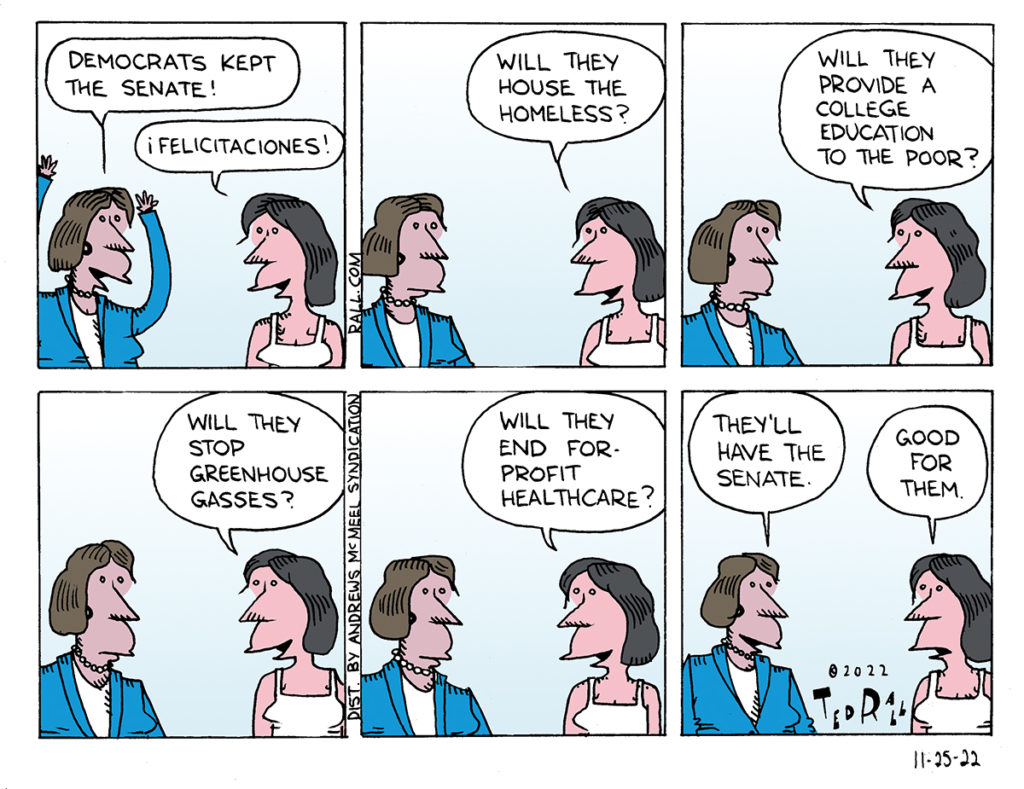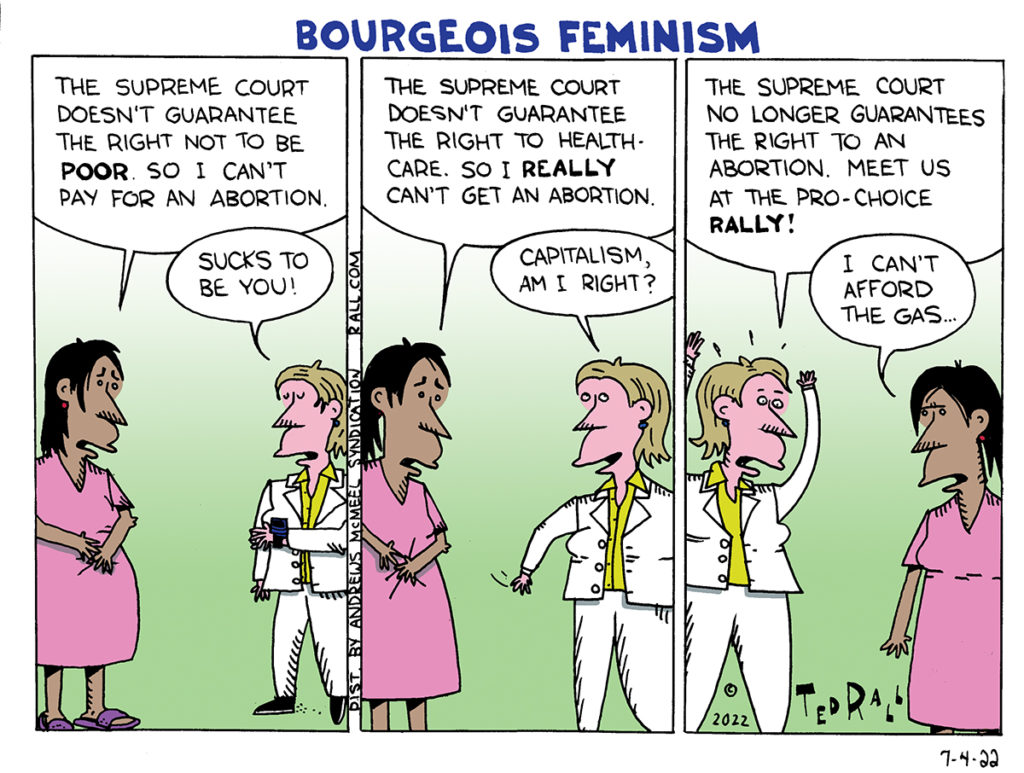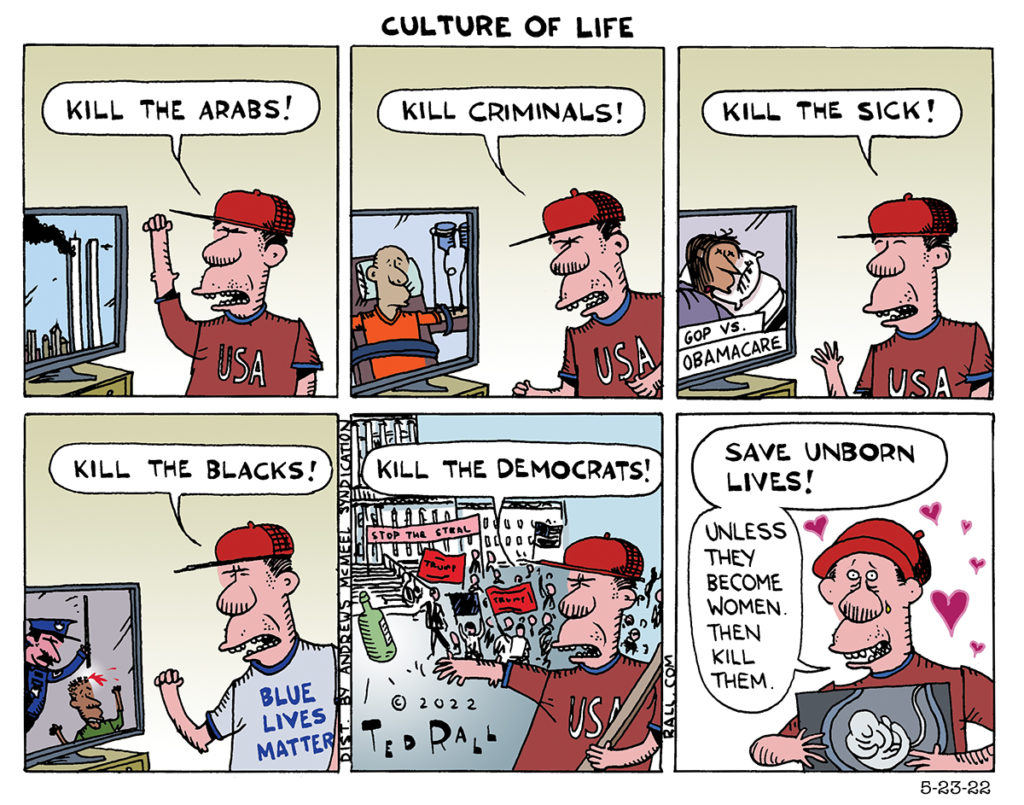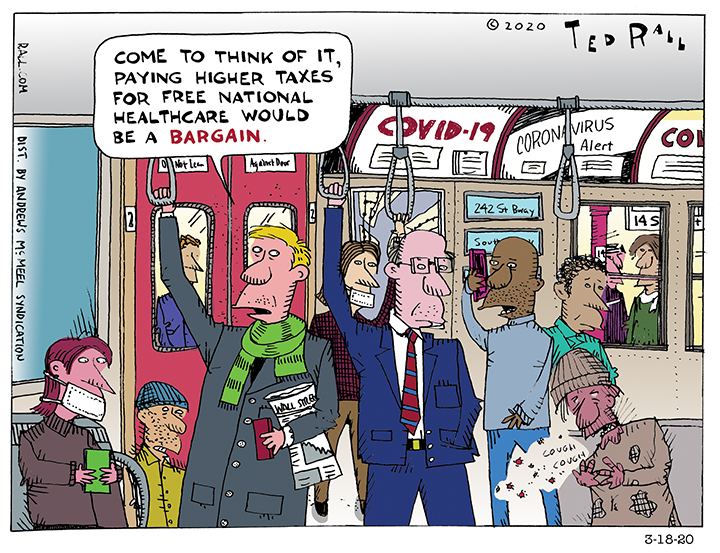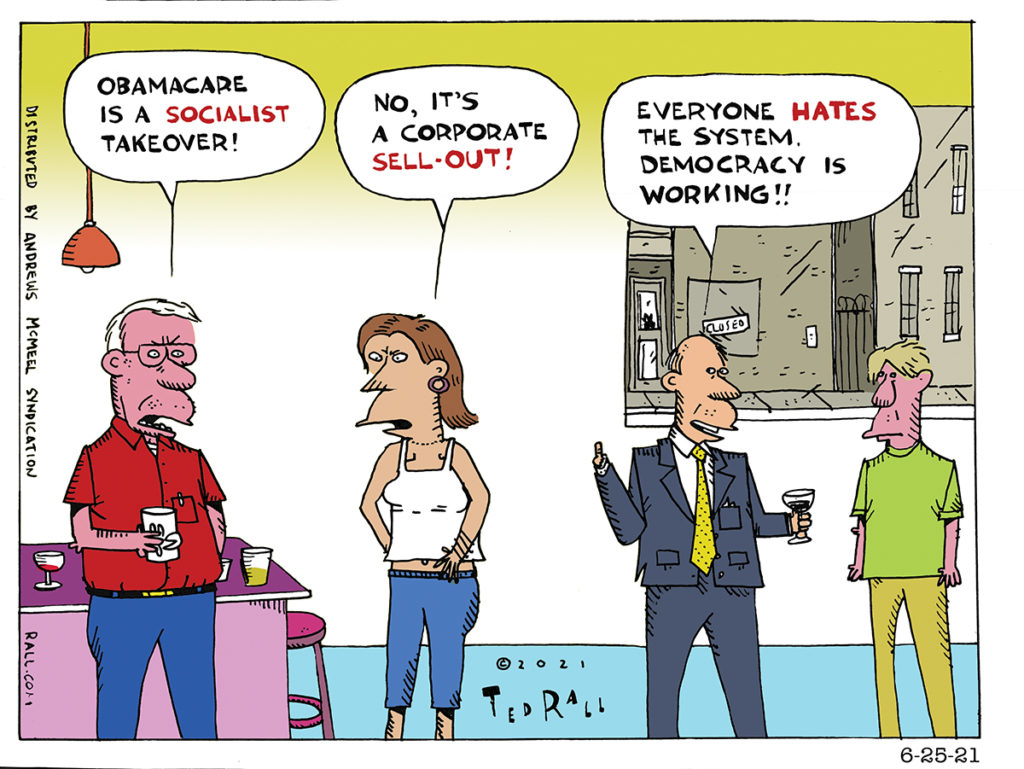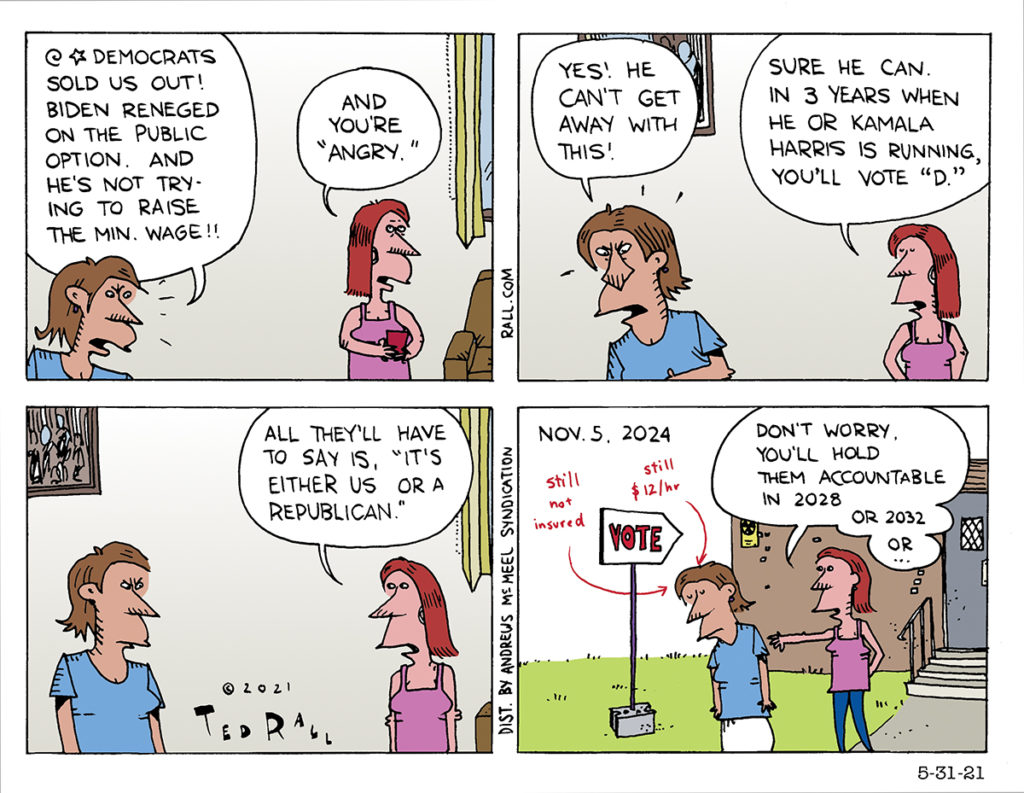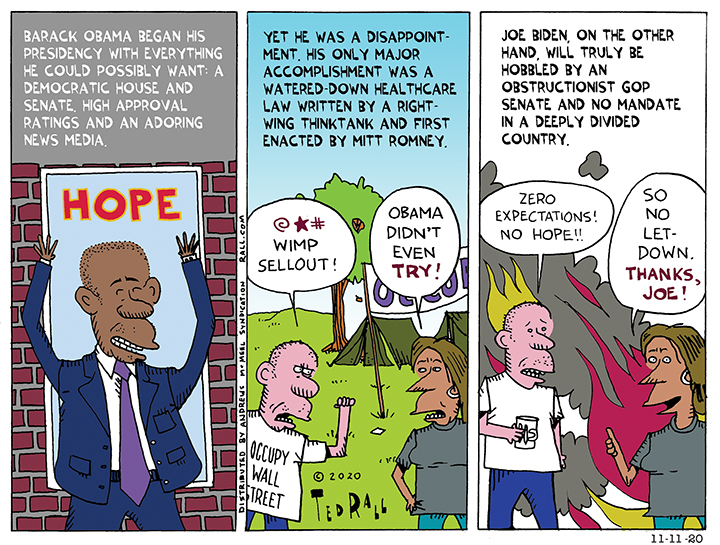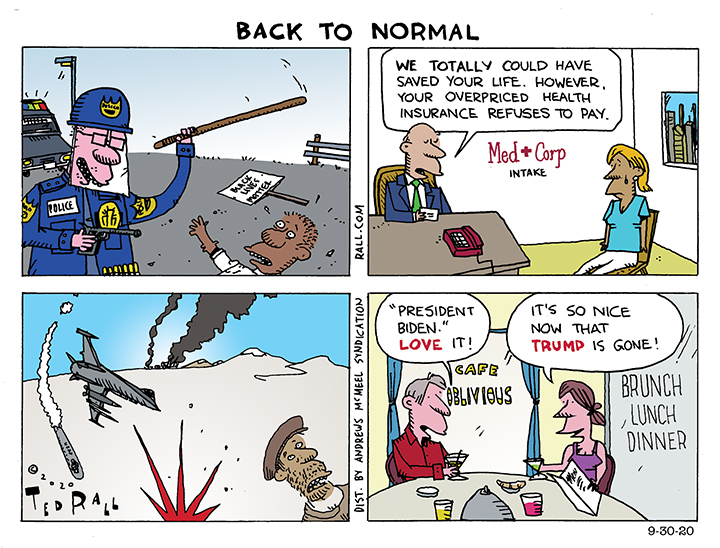Liberals believe that a compromise that gets us closer to a goal is better than no progress at all. But compromise can lead to the dead end of dilution and a false sense of resolution.
The early 20th century progressive and presidential Robert “Fighting Bob” LaFollette argued that politics played into different a psychological dynamic. “In legislation no bread is often better than half a loaf,” he observed. “Half a loaf, as a rule, dulls the appetite, and destroys the keenness of interest in attaining the full loaf.”
Nothing in recent history demonstrates LaFollette’s viewpoint more clearly than the evolution of then healthcare debate. When Obama won the presidential election in 2008, healthcare—particularly its expense—was such a big worry for American voters that the ruling classes came to view the problem as a crisis. The system was expensive, dysfunctional and despised. Despite an economy reeling from a severe Great Recession, the new president quickly moved to address the issue by pushing for passage of his 2009 Affordable Care Act, popularly known as Obamacare, and even a divided Congress went along.
Obamacare was a classic political compromise of the variety that moderates adore: it made nobody happy. The healthcare industry—though their concerns soon proved to have been wildly unfounded—worried about losing some of their precious profits. Patient advocates preferred a European-style, fully socialized system in which doctors and nurses are government employees to the ACA, a market-based system originally conceived by the conservative Heritage Foundation. Figuring that the ACA would move the center of gravity closer to socialized medicine, leftists supported it despite their reservations.
By most accounts, the ACA has failed to fix the problems it was supposed to address. In many American counties (health plans are designed by county) the government “marketplace” has just one or two plans to “choose” from. The only high-income nation without universal health coverage, the U.S. spends more by far on healthcare, both per person and as a share of GDP, than other countries. Yet we still have the lowest life expectancy at birth, the highest death rates for avoidable and treatable conditions, the highest infant mortality and the highest rate of people with multiple chronic conditions and an obesity rate nearly twice the OECD average. Premiums are high but co-pays are low, so we see physicians less often than patients in most other countries. A whopping 650,000 Americans go bankrupt each year due to healthcare bills, accounting for 60% of all personal bankruptcies. Americans are extremely dissatisfied with the cost and access to healthcare.
A decade and a half later, healthcare ranks near the bottom on the hierarchy of policy priorities articulated by voters. How can this be?
LaFollette’s dictum at work! The half-loaf of ACA dulled the appetite, creating the illusion that the healthcare problem had either been resolved—an opinion common among those with employer-supplied health insurance and/or those who live in one of the big cities where the online marketplace has competition—or had been as fixed as is reasonable to expect from the current system. As a result, there is no indication that politicians of either party are inclined to propose a legislative improvement any time soon.
Nevertheless the need is acute. People want affordable healthcare (even if they despair of ever getting it). The right to affordable—no, free—healthcare is a basic human right. Without it, after all, people quite literally drop dead.
According to a 2020 estimate by the nonpartisan Urban Institute, Bernie Sanders’ Medicare For All plan—the most thoroughly thought-out, frictionless plan on the drawing board that salvages as much from the existing network as possible, would cost about $3 trillion per year. However, a Yale study concluded that the government would save about half a trillion each year “by improving access to preventive care, reducing administrative overhead, and empowering Medicare to negotiate prices.” Working net cost: $2.5 trillion per annum.
Medicare For All would replace our current, highly wasteful system. “We’re already paying as taxpayers for universal basic automatic coverage, we’re just not getting it,” economist Amy Finkelstein says. “We might as well formalize and fund that commitment upfront.” She points to the fact that the federal government currently pays $1.8 trillion a year for Medicare, Medicaid, veterans’ services and other government-funded healthcare costs—all of which would vanish after they were replaced by a holistic Medicare For All scheme. Third-party programs, which are often government-funded, and public health programs eat up an additional $600 billion per year.
Medicare For All would also save the lives of the 45,000 Americans who die annually due to lack of insurance. The IRS would collect an additional $1 billion a year in tax revenues as a result.
So the net cost of treating everyone who needs medical care is about $100 billion per year, which is just over two percent of the $4.5 trillion we’re currently wasting on wars and other things that make our lives worse.
Most analyses of Medicare For All focus on how it would save patients money. Even if they had to pay higher taxes, this is indeed true. For liberals, such an improvement might be triumph worth celebrating. The Left, however, must be as ambitious as possible, even under the bourgeois electoral democracy currently in place pending the Revolution for which we are waiting and ought to be working for. Healthcare, a basic human need every bit as essential to life as food and clean water, should be provided by the government, gratis. The good news is, we can afford it. What we require to enact a real First World healthcare system is for the Left to come to power.
Next: A college education is a right. So is the choice not to attend college, yet still be considered for a job.
(Ted Rall (Twitter: @tedrall), the political cartoonist, columnist and graphic novelist, co-hosts the left-vs-right DMZ America podcast with fellow cartoonist Scott Stantis. You can support Ted’s hard-hitting political cartoons and columns and see his work first by sponsoring his work on Patreon.)

